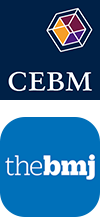



 What would you consider a disease?
What would you consider a disease?
This question has been formulated in different ways in the previous two blogs The evidence of what? and Trustworthy evidence or paid lip service. Evidence-based medicine (EBM) seems to lack explicit considerations of the properties of the phenomena that we want evidence about (1–4). The consequence can be a discrepancy between potentially correct evidence and our fundamental understanding of the phenomenon. Hypertension was used as an example: clear evidence of being a risk factor but unclear and unaware considerations of what constitutes a disease turns it into overdiagnosis (5).
Following example is chosen by its properties of being an existential condition: sarcopenia is the phenomenon of age-related loss of muscle mass and function and was assigned with an ICD-10-CM diagnosis code in 2016 (6).
For clarity, let us assume that the current evidence of sarcopenia is all highly trustworthy (6–9):
Does the presented evidence show that sarcopenia should be diagnosed? Or does the evidence show natural life conditions and correlations that are related to getting older? Should we diagnose because it is a disease to loose muscle mass when you turn old? Or should we diagnose because it is a potential solvable problem for some?
In the case of hypertension, we are diagnosing a risk (a continuum) and evidence is insufficient to draw a line for the reach of the diagnosis. Regarding sarcopenia, evidence is insufficient to decide which existential phenomena that should be diagnosed. EBM is a crucial help for medical research and practice and EBM does avoid overdiagnosis, but it seems insufficient to suggest tools to discuss the properties of the diseases we are diagnosing including the limitations (1–4).
Without such discussions all kind of other factors and interests can dictate the development. In the case of sarcopenia, the evidence is used as the argument to consider the condition a diagnosis and disease (6–8). The evidence is used as if evidence speaks for itself, as if evidence-based health correlations naturally legitimise the creation of a new diagnosis. Such an approach opens for any condition to potentially become a disease as soon as evidence backs it up and can be used for conflicting interests. This challenges our fundamental idea and understanding of a disease.
EBM could promote explicit considerations from those who want to influence the diagnostic use by stating 1) what they consider a disease and why, 2) the reasons why the given condition should be considered a disease. The point of such an EBM-initiated discussion is not to agree but to point out that we disagree, that the real question may not be about evidence but underlying values and preferences.
Christoffer Bjerre Haase is Doug Altman Scholar and a researcher and medical doctor from University of Copenhagen. Based on the theory of science, philosophy and evidence-based medicine, Christoffer is primarily interested in the inter-relations between the concepts of overdiagnosis and diagnosis/disease and the ways (medical) science and societal discourses influence those concepts.
Christoffer Bjerre Haase has no conflict of interest